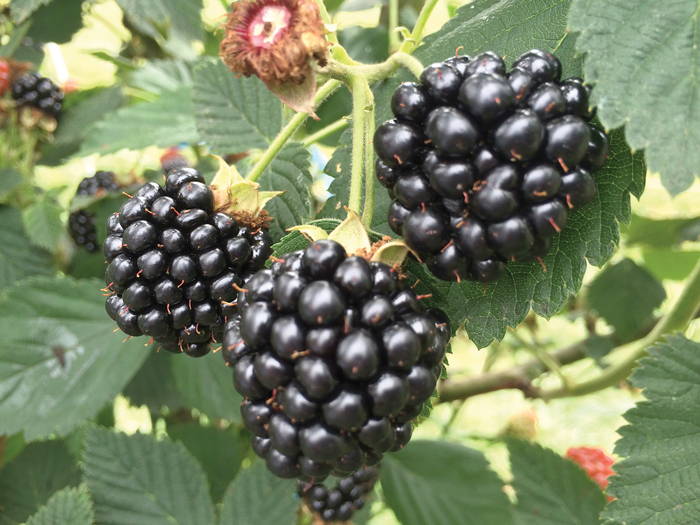Labels on food remain confusing to most consumers
Published 12:00 am Friday, July 28, 2017

- Submitted photo Organically grown blackberries. Pesticides are still used on this organic farm but they use only OMRI approved pesticides.
By Lauren Gibson
Cooperative Extension Intern
When you go to the grocery store and see labels on your food, do you wonder what they mean? Labels are commonly misinterpreted due to lack of information.
If your food is labeled all natural, does that mean there are no genetically modified ingredients?
Foods have different labels describing the ingredients. These labels may be Genetically Modified Organisms (GMO), organic or natural.
GMOs are modified by changing foods and/or organisms by altering the genetic makeup. The processes include moving genes from one organism to another or changing the already present genes in the organism.
For instance, golden rice has been created to include vitamin A to give children access to nutrients needed to develop and maintain good eyesight. This has caused a substantial change in the number of people who go blind in countries without ready access to vitamin A.
While a law has been proposed to mandate GMO labeling, it has not passed, so GMOs are voluntarily labeled. Food labeling for GMOs is only mandatory if there is a substantial difference in the nutritional and/or safety of a food.
Unless those who produce the GMO can provide evidence that they did not genetically alter an organism to contain strands of milk, eggs, wheat, fish, tree nuts, peanuts, soybeans or shellfish (90 percent of food allergies are related to these), a label is not required for the product, but if the organism does contain one or more of these foods, a label is required.
If the product contains less than 1 percent of GM ingredients, it is not usually labeled.
Another label that confuses consumers is certified organic. According to the U.S. Department of Agriculture Food Safety and Inspection Service, organic food production limits the use of chemicals, pesticides, hormones, antibiotics and other additives.
There are different levels of organic foods. Many consumers believe being organic means the produce is not treated with pesticides. This is not true. Pesticides are substances used to terminate organisms and insects harmful to plants and/or animals.
Certified organic produce can have pesticides. Some organic pesticides approved by Organic Materials Research Institute (OMRI) can be as toxic as similar conventional products. OMRI is the institution that approves and disapproves products as certified organic.
To be certified, the product can only have allowed substances and no excluded methods, such as genetic modifying/engineering and ionizing radiation. This process must be overseen by a USDA National Organic Program certified agent, following every organic regulation of the USDA.
There are different levels of organic produce farmers can sell. If the farmer sells less than $5,000 of the food, it can be labeled organic without certification, even if pesticides are used. For organic approved, it must be natural (not synthetic or created in a lab).
To become certified, farmers must submit an application. An agent will review it to make sure the farmer complies, goes through an on-site inspection, submits documents from the past three years, and has had a farm for a certain amount of time. That must be reviewed by a committee which decides if the farmer is certified.
For more information on how to be certified, check out https://growingsmallfarms.ces.ncsu.edu/growingsmallfarms-orgcertguide/.
The natural label is fairly new, and it can also be confusing since there are no regulations for the label. The Food and Drug Administration (FDA) considers natural foods to be ones that do not contain artificial or synthetic products, such as food coloring.
A Consumer Reports National Research Center Natural Food Labels Survey suggested that most consumers search for foods labeled natural thinking there are no artificial products, hormones or pesticides, but that is not the case.
The FDA has not yet provided a concise definition of what natural labels mean, so that leaves the community guessing. People are more attracted to natural labels due to the idea that the foods are healthy, but natural labels don’t necessarily mean that.
As you can see, there are a lot of things to confuse consumers in the retail world, and it really takes time to investigate what everything means.
If you would like to learn more about these labels, visit the following websites:
http://msue.anr.msu.edu/news/just_how_natural_is_a_food_labeled_natural
https://www.fda.gov/aboutfda/transparency/basics/ucm214868.htm




